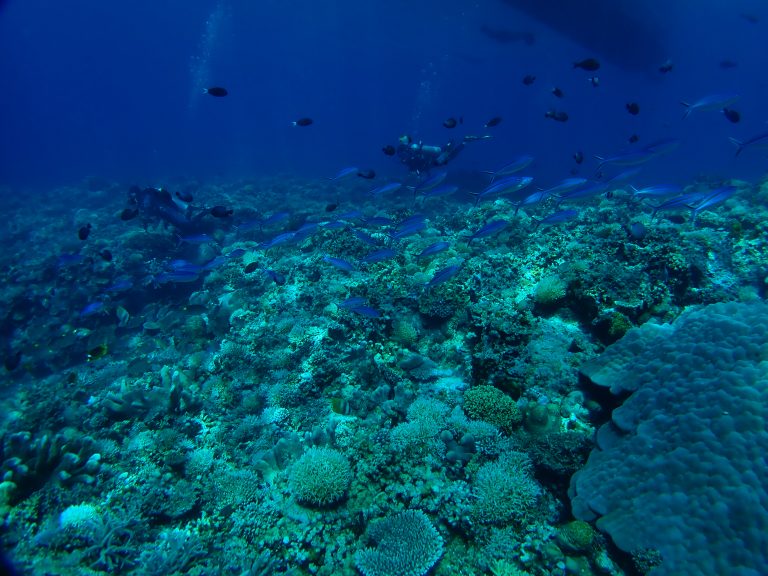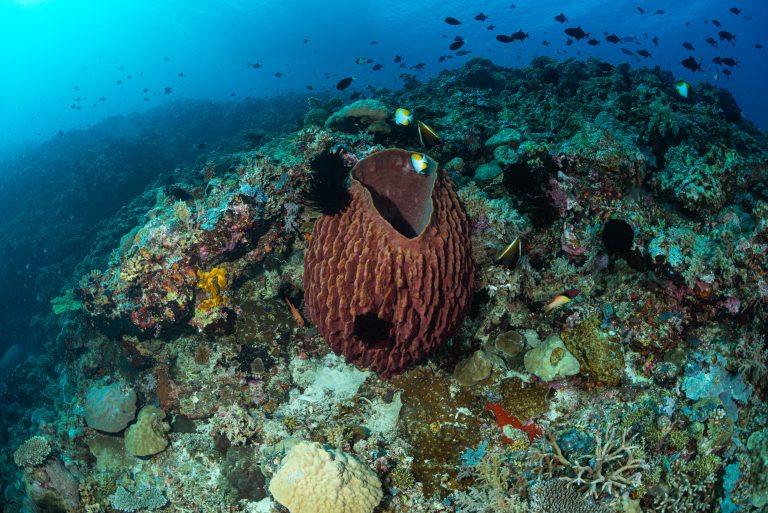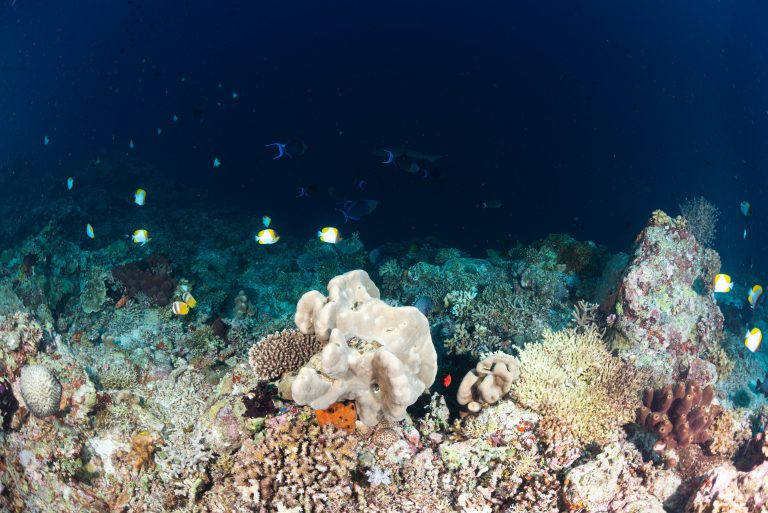Fish and Benthos

Beneath the Waves: The Coral and Fish of Apo Reef
Apo Reef Natural Park is a marine treasure trove that mesmerizes both scientists and divers alike. Its contiguous coral reefs extend to mesmerizing depths, creating a vibrant underwater landscape teeming with life. From the earliest assessments to recent surveys, Apo Reef continues to reveal its ecological riches and the complexities of its marine biodiversity.
From the shallows to the deep, the coral reef ecosystem holds invaluable importance to the marine biodiversity of Apo Reef Natural Park. These marine creatures, often mistaken as plants or rocks, are animals that provide food and shelter to the different underwater inhabitants. At least 60 hard coral genera are recognized as contributing to the reef complex’s expansion. Porites and Acropora are regarded as the two more significant genera for reef construction.
Within the coral lies the presence of the zooxanthellae, creating a perfect partnership between them. These zooxanthellae give the breathtaking coloration of the corals, as well as food. However, due to rising temperatures, the zooxanthellae are greatly affected, resulting in its dispersal, leaving only the white skeleton of calcium carbonate of the coral. With the ongoing bleaching event, our coral reefs should be monitored regularly as it can affect other organisms living in them.
In addition to severe weather, corals are vulnerable to predator attacks, especially by the Crown-of-thorns starfish (Acanthaster planci). This predator also called the “starfish of destruction,” slowly crawls across coral reefs, consuming living coral tissue and causing significant coral degradation. Outbreaks of Crown-of-thorns starfish can rapidly decimate large sections of coral reefs, threatening delicate marine ecosystems.
There is an amazing variety of reef fish living in the waters of Apo Reef. Scouring the literature, along with the field assessments, the incredible biodiversity of the reef was revealed to have 530 species from 57 families of fish. One of the reef’s most majestic inhabitants is the Napoleon Wrasse (Cheilinus undulatus), recognized for its large size—reaching up to 2 meters—and distinctive hump on its forehead. This gentle giant plays a vital ecological role by feeding on coral predators like the crown-of-thorns starfish, thus contributing to the reef’s overall health.
Efforts to protect Apo Reef Natural Park are integral to safeguarding its rich biodiversity. Ongoing research and monitoring initiatives provide essential data for effective conservation strategies. ARNP management office collaborate closely with different research institutes and local stakeholders to ensure sustainable practices and mitigate threats to the reef’s fragile ecosystem. Physical protection from illegal fishing has also helped stabilize the reef. To protect the vibrant underwater life of Apo Reef, it is crucial to implement robust monitoring and conservation strategies to combat these pressing threats.
Image Gallery









